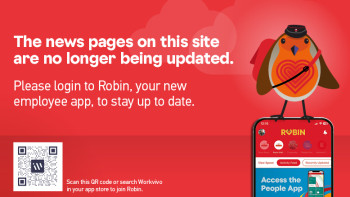Ahead of the curve
Royal Mail has been a pioneer for more than 500 years, and we never rest on our laurels.
- From 1660, ships known as packet boats delivered mail from Harwich to Holland and the continent beyond. They became instrumental in the development of the Empire.
- Date stamps, or postmarks, were first used in the UK in 1661.
- Postage stamps were introduced in 1840, the origins of the one-price-goes-anywhere universal service – a world first.
- Christmas cards were invented by Royal Mail in 1843.
- We also introduced airmail, in 1919, with the world’s first scheduled flight to transport mail between Hounslow and Paris.
That spirit persists today. The work we’re all doing together to transform our business is a prime example.
Another more modest one was the replacement of the wrapping on Courier in 2019. On the back of growing feedback from our readers, we researched how best to replace the traditional polythene wrapper with something more environmentally friendly.
We worked extensively with our suppliers to look at all the options, before going for a revolutionary paper wrap.
Paul Smith, senior channels manager, said: ‘Before we introduced the paper wrap, we were receiving more and more letters from our readers concerned about non-recyclable polythene.
‘We worked with our agency to find a sustainable alternative. It took a while, because we wanted to get it right. The feedback since the switch has been extremely positive.’
Paul revealed just how ground breaking the move was: ‘The company we chose are market-leaders in this field. When we adopted the new wrapper, we were only the second or third magazine to do so.’
Following a recent behind the scenes visit to the fulfilment house, which you can watch in the above video, the innovations continue. A new, more powerful glue has been adopted, along with a number of further improvements.
‘The fact that we are ahead of the curve with this means we will be working with our suppliers to continually fine-tune and develop the process,’ added Paul.
In the meantime, the impact is significant. A print run similar to Courier, being delivered in polythene, would potentially generate half a tonne of landfill waste each issue. So, in the space of a year, we’ll avoid five tonnes of non-recyclable waste.
The demand for similar paper wraps has skyrocketed in recent months. More and more publishers are adopting this option, the viability of which has a lot to do with our pioneering spirit at Royal Mail.
Steps like this, individually, are impressive. Collectively, they show what a powerful and positive impact Royal Mail continues to make.



